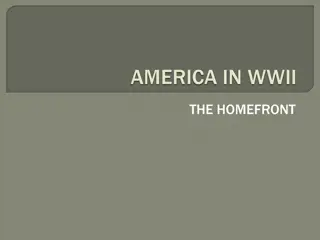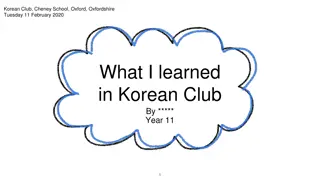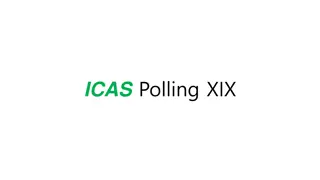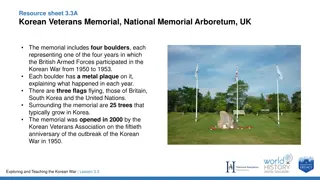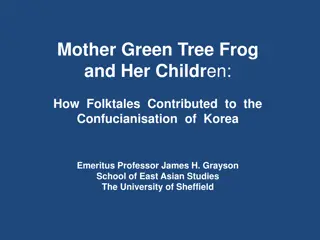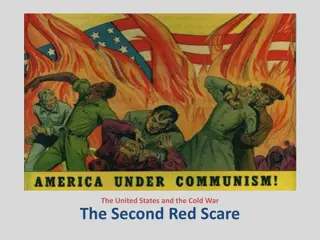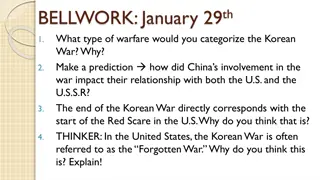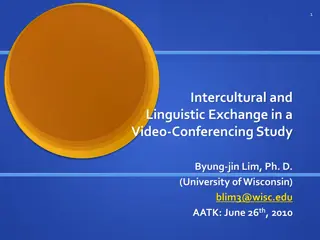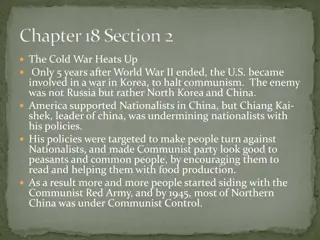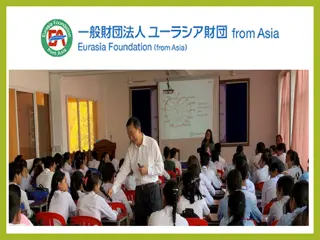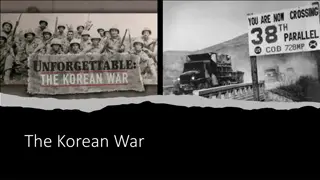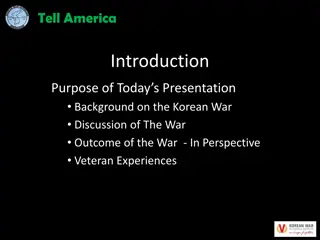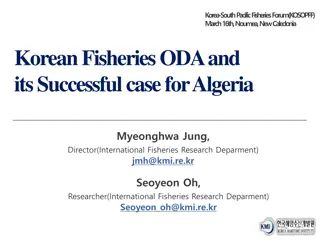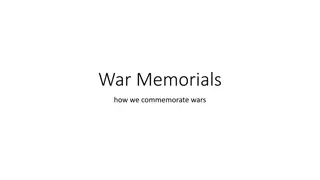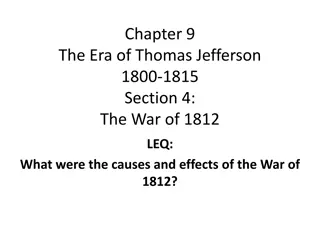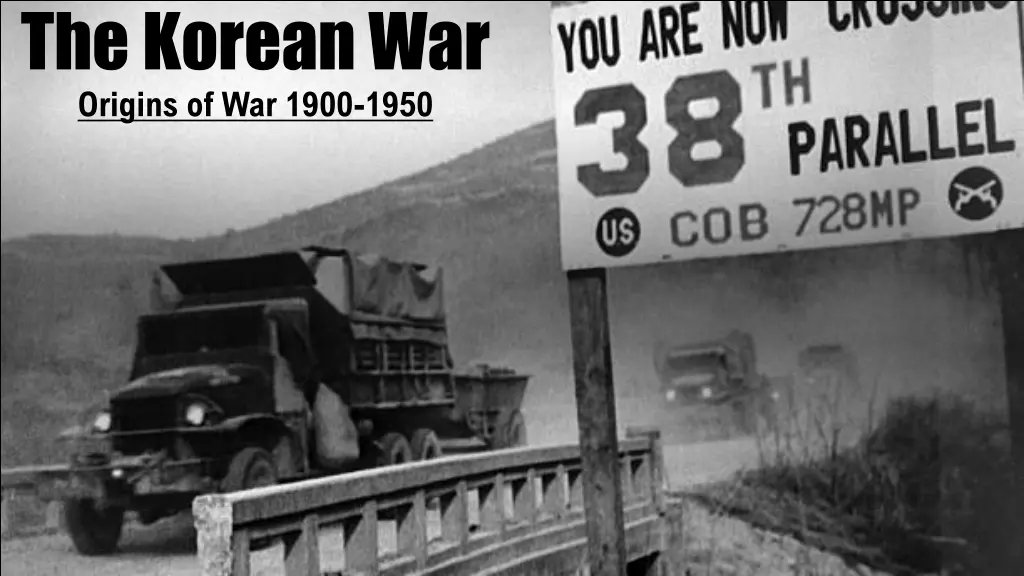
Origins of the Korean War and Joseon Korea
Explore the origins of the Korean War, the history of Joseon Korea, the impact of World War II and the Cold War, and the phases of Japanese colonial rule in Korea. Learn about the events leading up to the division of Korea at the end of World War II and the subsequent interference of Soviet and American powers.
Download Presentation

Please find below an Image/Link to download the presentation.
The content on the website is provided AS IS for your information and personal use only. It may not be sold, licensed, or shared on other websites without obtaining consent from the author. If you encounter any issues during the download, it is possible that the publisher has removed the file from their server.
You are allowed to download the files provided on this website for personal or commercial use, subject to the condition that they are used lawfully. All files are the property of their respective owners.
The content on the website is provided AS IS for your information and personal use only. It may not be sold, licensed, or shared on other websites without obtaining consent from the author.
E N D
Presentation Transcript
The Korean War Origins of War 1900-1950
Major Questions Who is responsible for the Korean War? When did the Korean War begin and when did it end? Module 1 Questions How did World War II lead to the Korean War? What influence did the Cold War have on post-World War II Korea?
Module Theme: How to Make a Civil War
Joseon Korea (1392-1897) Founded by Yi Seongye Territory Roughly the size of Minnesota Governed by the Yangban A hereditary social class Slave Society Chinese Tributary Ming China (1392-1644) Qing China (1944-1895) One of the longest unbroken dynasties in human history
Battle Ground of Empires (Qing, Russian, Japanese) Sino-Japanese War (1894-95) Donghak Rebellion (1894) China helps King Gojong but Japan uses opportunity to install government friendly to Japan Crushing defeat for the Qing Empire in 1895 Established Japan as the dominant East Asian power Russo-Japanese War (1904-1905) Results in Ito Hirobumi & Japan establishing protectorate over Korea (1905) Ito assassinated in 1909 August 22, 1910, Korea becomes Japanese Colony
Colonial Korea Three Phases of Japanese Colonial Rule: Phase I (1910-1919): Government General It eliminated all Korean political participation, restricted Korean business activity, and invested heavily in the promotion of rice cultivation for export to Japan. Police could fine, flog, and torture for minor offenses. March 1st, Movement 1919 Koreans push for independence Phase II(1919-1931): Cultural Government Greater degree of political participation, freer speech, and business rights. Phase III (1931-1945): Military Rule Huge amounts of Japanese Investment in Korean heavy industry and infrastructure. Repression of freedoms that Koreans enjoyed under Phase II. Koreans forced to take Japanese names, speak Japanese, and join Japanese religious and military institutions.
The End of World War II & Divided Korea Soviet Invasion of Manchuria & Atomic Bombs Soviets attack Japanese Empire (August 1945) Russian forces enter Korea Americans drop atomic bombs (August 1945) Both effectively end World War II Soviet American Competition Soviets invade from the North Americans send troops from the South (one week after wars end on August 15, 1945) They meet at the 38thParallel Koreans formed local People s Committes Soviets used these committees to install leaders they favored (Jo Mansik) Banned collaborators Lowered working hours to 8 hours per day Redistributed land Banned child labor Established prison camps Americans used these committees to install leaders they favored (Syngman Rhee) Railroad strike Farmer riots Violent strikes Republic of Korea founded August 15th,1948 Leader Syngman Rhee Democratic People s Republic of North Korea founded September 9th1948 Leader Kim Il-Sung Kim replaced Jo Mansik in 1946 Jo opposed Stalin s agreement to set up a trusteeship for Korea with the United States
The Cold War (1947-1991): The Truman Doctrine Domino Theory Communist expansion in one country will lead to communist expansion in neighboring countries. Cold Wars vs. Hot Wars
Starting a War (1948- 1950) North Korea & China 30,000 North Korean Soldiers fighting in Chinese Civil War in April 1947 (15 to 25 Percent of CCP forces). Fought even as far south has Hainan Guerilla Warfare in the South 3,000 to 6,000 Soldiers fighting in South Korean territory in 1949. Cross boarder raids launched by both sides (1949) Syngman Rhee and South Korea Eager to recover the North United States Government threatens to cut off support if South invades the North. Support would only come if the North attacked first. Kim Il-Sung and North Korea Eager to recover the South Kim the South is still not instigating an attack (to justify their own attack) Soviet Union discourages invasion plans Kim plays the Soviets against the PRC Journalist A.T. Steele s observations An unadmitted shooting war between the governments of the U.S. and Russia is in effect today along the 38thParallel.
Question Review Who is responsible for the Korean War? When did the Korean War begin and when did it end? How did World War II lead to the Korean War? What influence did the Cold War have on post- World War II Korea?




